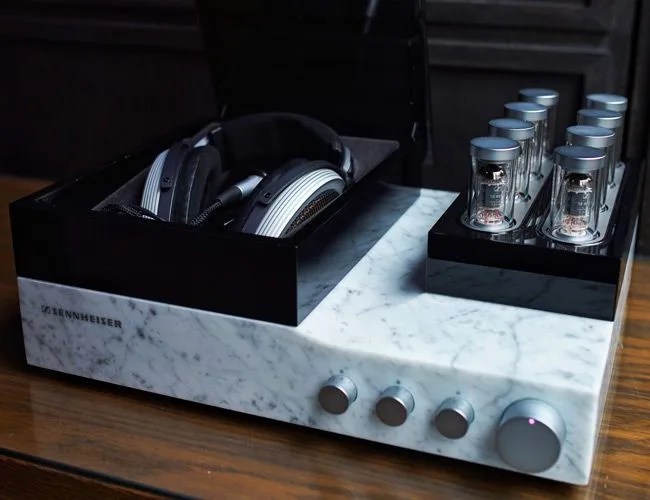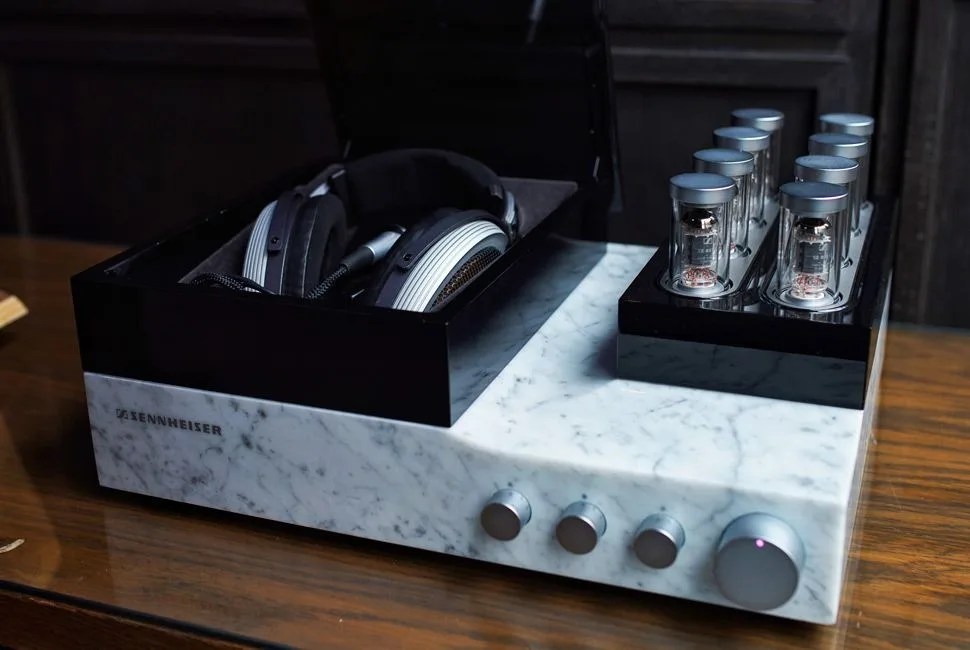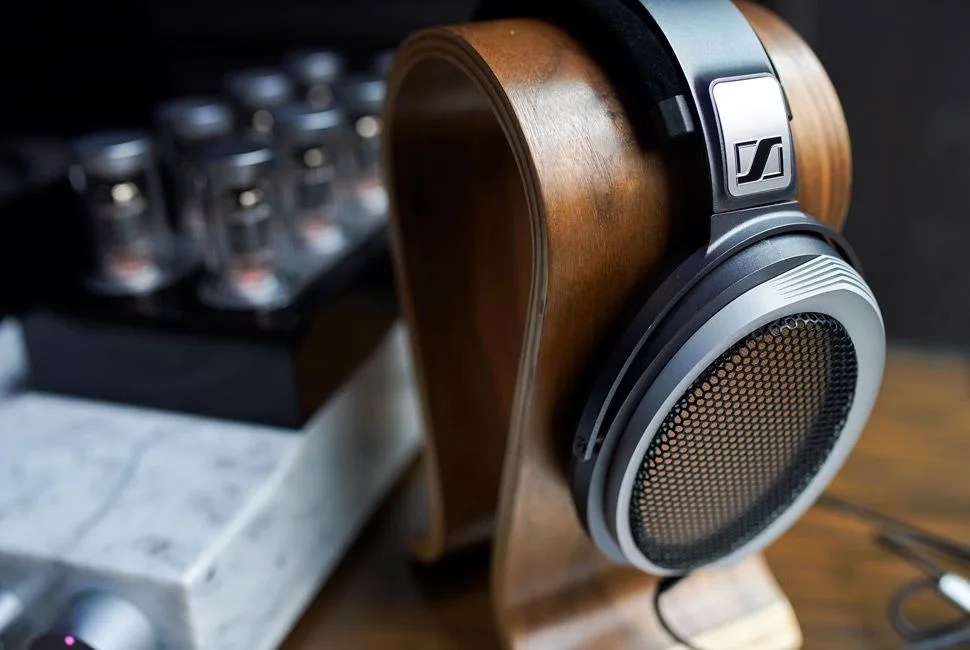3 photos
Halo products – those fantastically expensive, low-volume showcases of technological prowess – can be surprisingly polarizing endeavors for a company. Volkswagen took as much heat as it did praise for its over-the-top $1.2 million, 250 mph Bugatti Veyron, perceived alternately as either a virtuoso bit of supercar engineering or a bauble for the douchiest of one-percenters. Similarly, watch manufacturers routinely produce rare timepieces that sell at six-figure prices with complex tourbillons. A Vacheron Constantin Collection Excellence Platine series Patrimony Traditionelle for $325,000 is a grotesque indulgence for some, a feat of artistic engineering for others.
So when I sat down recently to try out Sennheiser’s own best thing in the world — its $55,000 Orpheus headphones, a fairly unostentatious pair of electrostatic headphones anchored to an amplifier shrouded in Carrara marble – I was locked and loaded, as fully ready to be appalled by the Meaning Of It All as I was to be blown away by the performance. My host pushed the wide power button, and three matte silver knobs on the front of the marble case emerged. After that, two rows of four vacuum tubes with glowing quartz glass bulbs rose with equal grace from the top. Then a translucent glass lid rose to reveal the mighty Orpheus headphones themselves.
Most audio engineering tends to simulate the concert experience – you in front of the band. With the Orpheus’s, you’re in the band.
I chuckled at the performance. Then I put them on. My host queued up a high-quality recording of The Eagles’ “Hotel California.” I knew the experience would be great — it’s Sennheiser, after all – but I wasn’t fully anticipating how specifically great it would be. The music started and it seemed I was suddenly sitting directly in front of the guitar. I could hear the strings vibrating to silence after each pluck, could pick up the sounds of finger movements up and down the board. It was unlike any other audio experience I’ve ever had; then it got better. As more instruments joined in, I drifted along from one to the other as each rose in prominence relative to the others, or in concert with them. I could isolate each one in my head at will and follow it as long as I liked, or I could let myself be swept along by the whole band.
Most audio engineering tends to simulate the concert experience – you in front of the band. With the Orpheus’s, you’re in the band.
Then we moved on to Norah Jones’ “Don’t Know Why,” and I warped into a small club to enjoy the delicate precision of her voice and the equally nuanced instrumentation. I realized then that the Orpheus’s present the music almost clairvoyantly as it’s intended to be listened to. In both cases, it was startlingly good, and nothing that my home systems could come close to replicating later. Two tracks, and I was utterly sold. I only wished I had more CDs (and more genres) handy to listen to long beyond the time Sennheiser had allotted for me.



